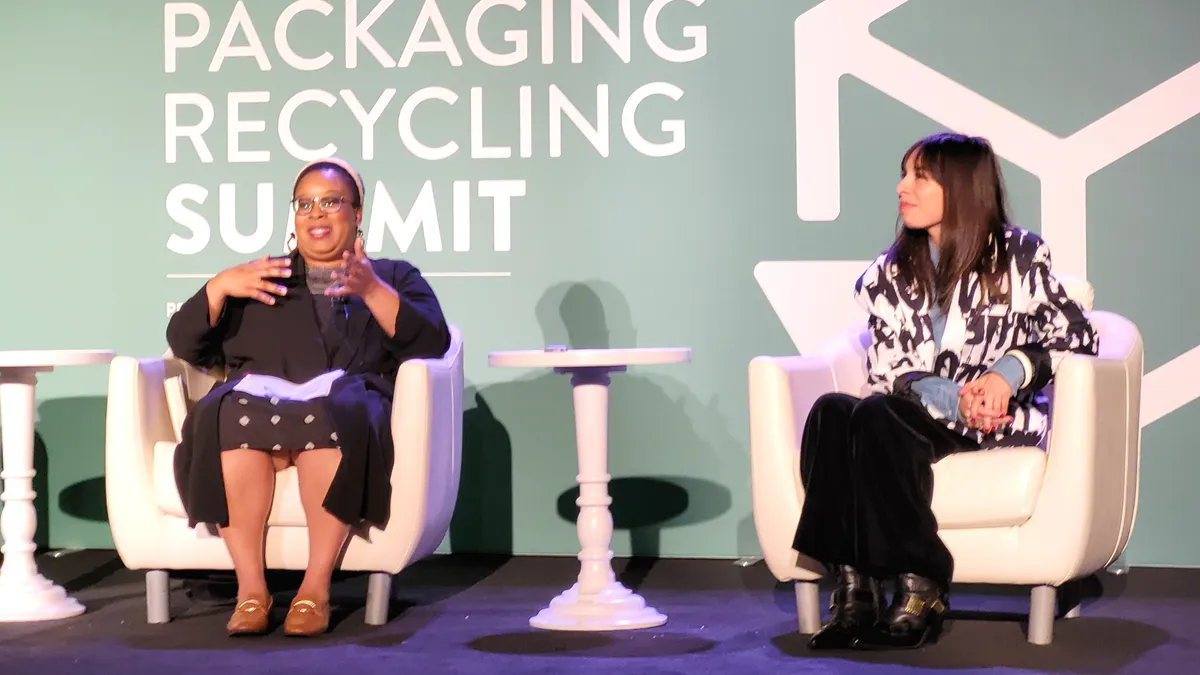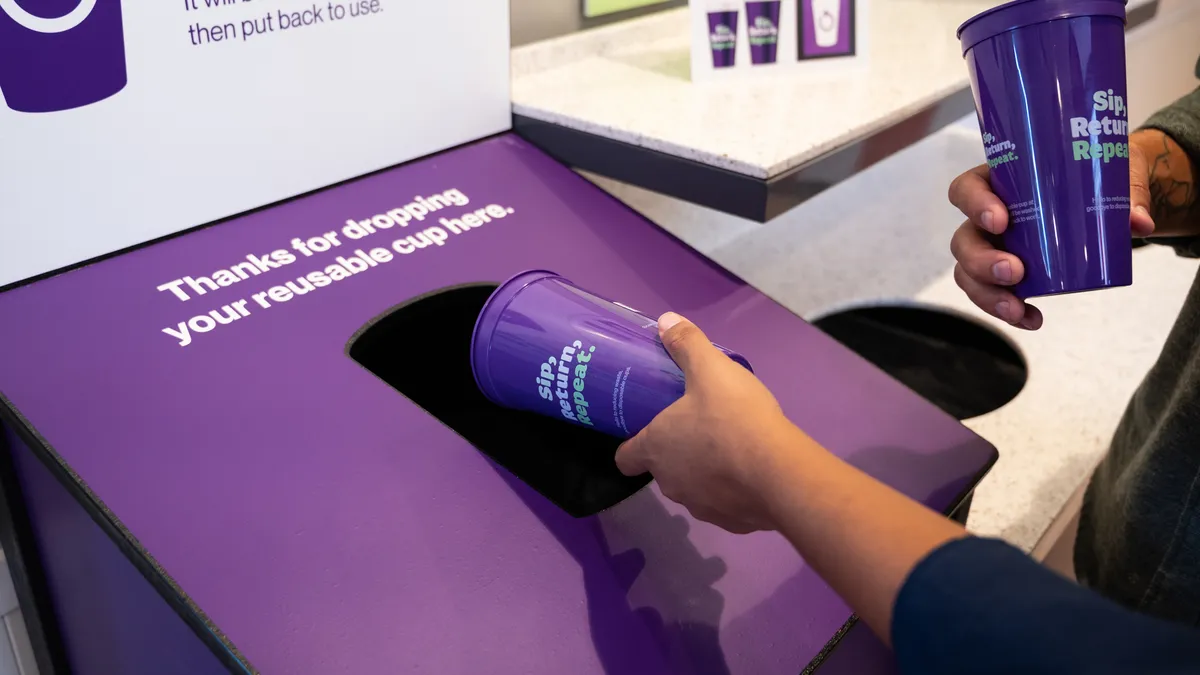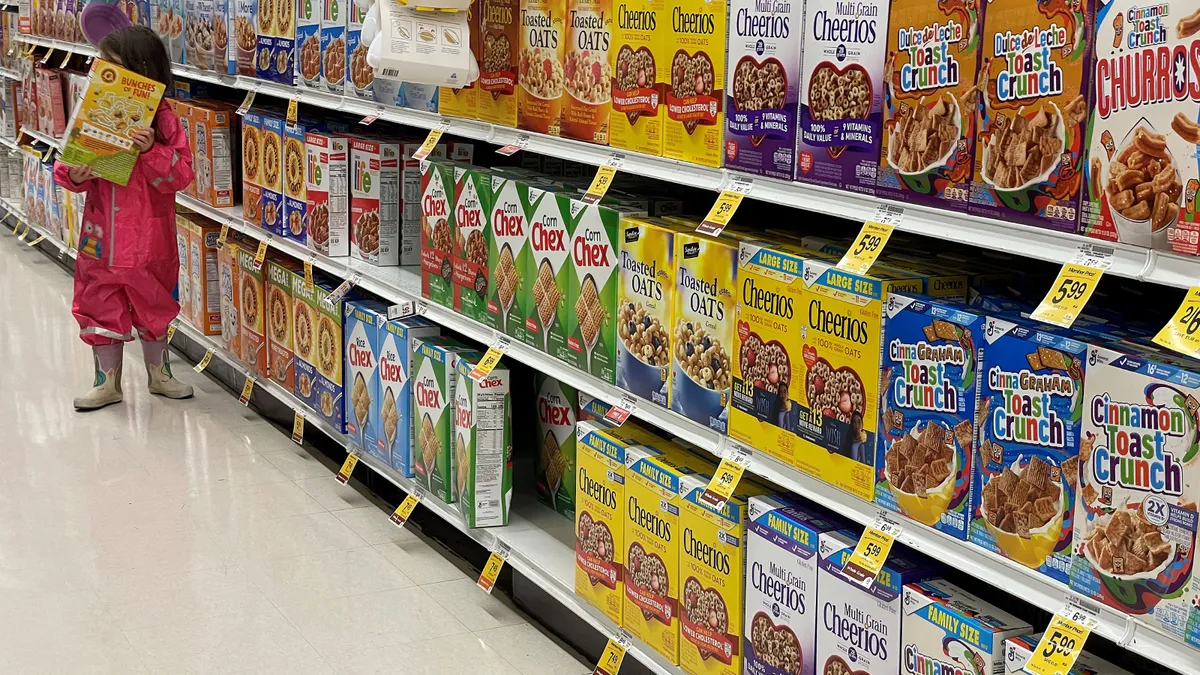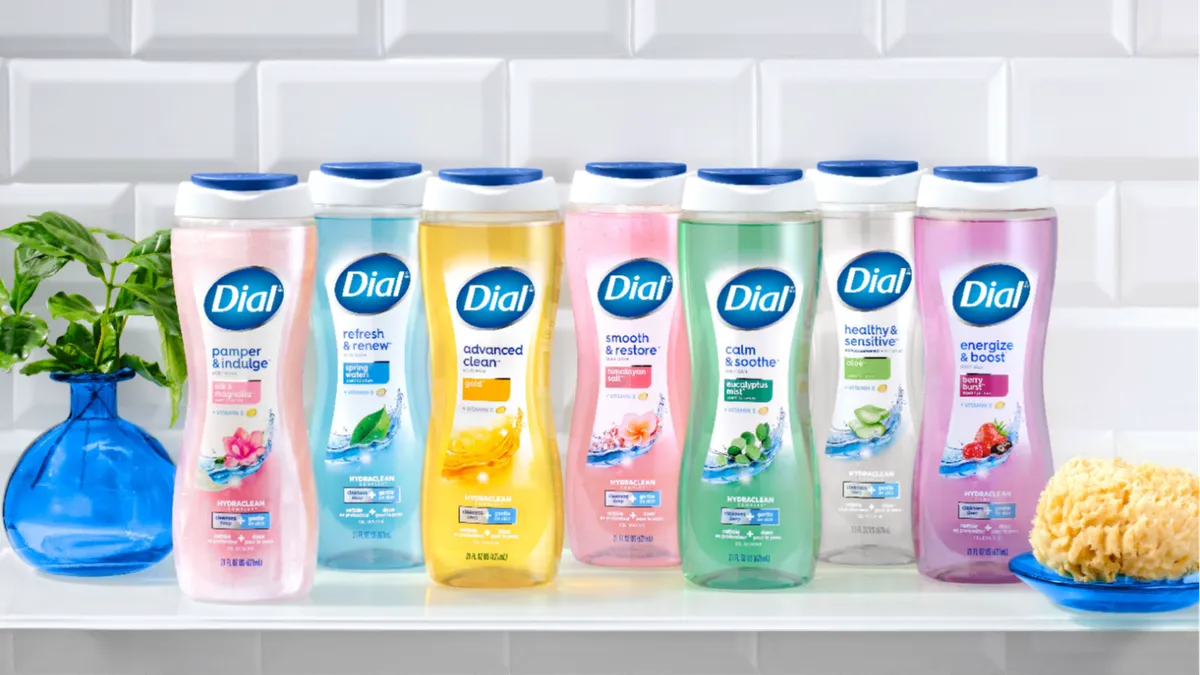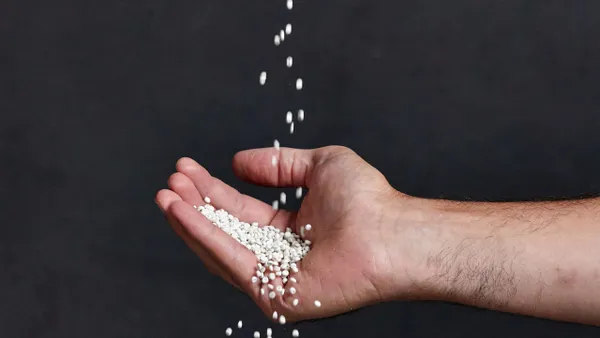Small things can make a big impact — and not always in the best ways. Small-format recyclable plastic packaging is one example, because it’s challenging to process at MRFs even if it’s collected, according to speakers at the Packaging Recycling Summit in Atlanta this month.
Small-format recyclables come in a variety of forms, including cosmetics, hotel miniature amenities, miniature alcohol bottles, pharmaceuticals and lids or caps. They have value when processed, but they're too tiny to be captured in most conventional curbside recycling streams, speakers said.
Up to 10% of plastic packaging is small-format by weight, and an estimated 25% to 40% of plastic packaging is small-format based on the sheer number of items, said Jennifer Park, director of engagement at The Sustainability Consortium, citing a study in the U.K. by the Waste and Resources Action Programme.
She cautioned that “there isn’t a lot of data on small-format, especially within the U.S.” The Sustainability Consortium therefore put together a series of characterization studies that attempt to quantify volumes and distribution of these packaging types to determine a value proposition for capturing them.
The results mirrored the U.K. study’s percentages, suggesting small-format plastic packaging comprises “a significant amount of material,” Park said, and it typically doesn’t get captured for recycling. She said the group found that consumers put 75% of their small-format plastic packaging in the trash and “25% was being incorrectly put in the recycling bin — we know that it’s not recyclable today.”
Complications with capturing
Generally speaking, recyclers cite the “two-inch rule” for capturing materials in curbside recycling streams: "If material is two inches or smaller, it's likely going to be sorted out" at a MRF, said Joy Rifkin, sustainability manager at Illinois-based recycler LRS. She offered advice to brands, packaging designers and manufacturers: "If you can make an item over two inches all the way around, that gives it the best shot at being recycled."
Rifkin also touted the “caps on” messaging that industry is disseminating to consumers for bottle recycling, specifically stemming from detached caps getting lost during collection. The education initiative contradicts what many consumers previously learned about curbside recycling, but the new message is catching on. The Association of Plastic Recyclers champions an educational campaign describing the reasoning: The industry previously couldn't effectively recycle bottles with caps on, but technological improvements have made the process possible and preferable to capture every bit of valuable material.
Loose caps and other small-format recyclables often end up in the glass stream at MRFs and contaminate it, said Jeff Snyder, director of recycling at Ohio-based Rumpke Waste & Recycling. "There is technology out there ... ballistic separators and some different things going on that can help small format. It's coming, it's just that we're not there yet as an industry," he said.
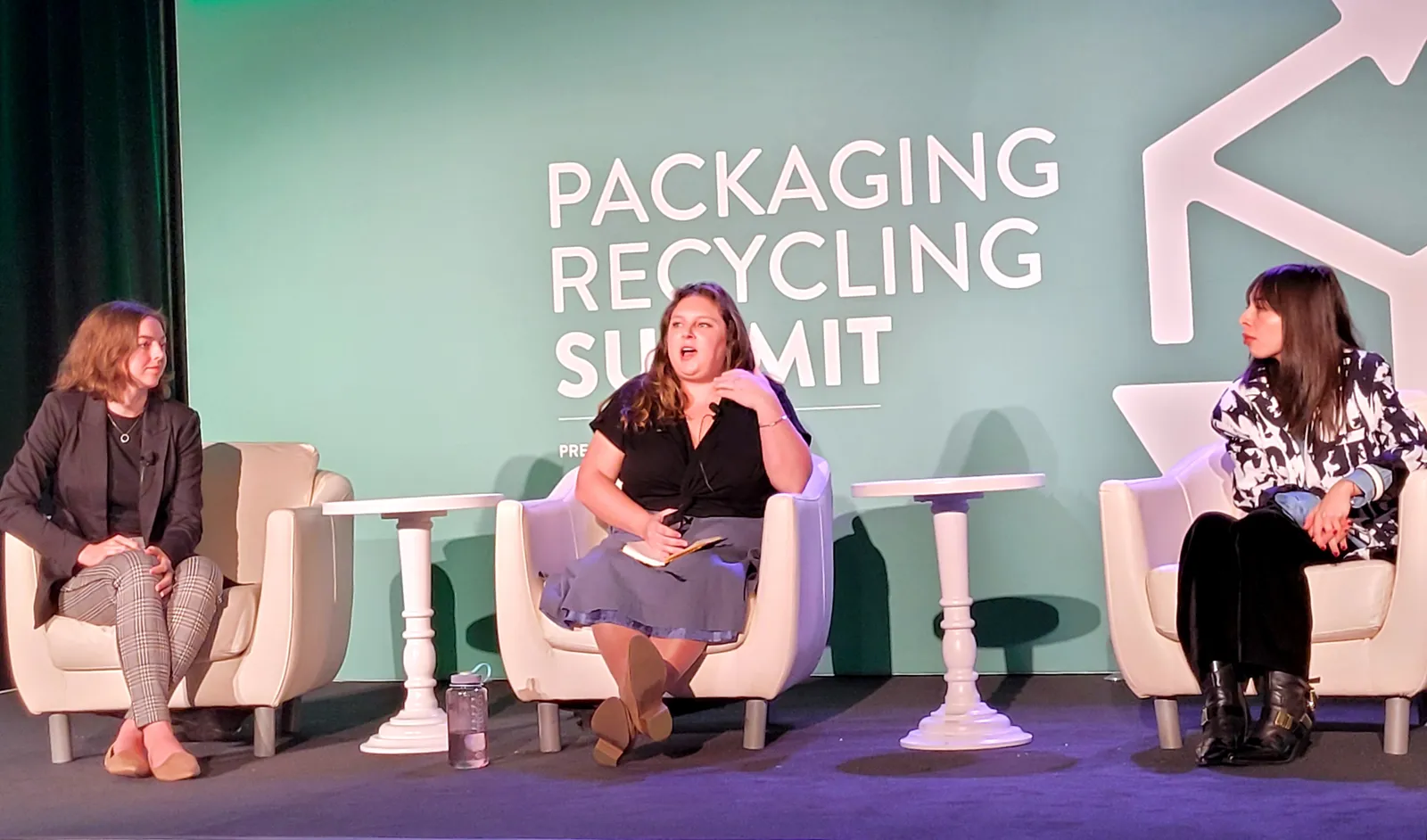
Finding technology solutions is important for the future because as brands “continue to reduce the amount of packaging that they’re using and reduce the amount of waste they’re producing overall, we expect packaging to get smaller, not bigger,” Park said. The Sustainability Consortium partnered with a research team at the Massachusetts Institute of Technology to understand viable MRF-level technologies for handling small-format packaging.
The MIT team created a cyclone-like separation tool as a secondary screening measure to remove the small-format plastics that end up in MRFs’ glass stream because they slip through the glass breaker screen. Lighter plastics remain suspended in the moving air and exit through a side outlet, while denser glass falls out the bottom, resulting in two purer streams. Testing and data crunching suggested that a MRF that implements this technology could save up to 1.25 million kilograms of CO2 equivalent annually by recovering small-format plastic packaging, said Alexis Hocken, a graduate student at MIT.
In addition, small-format plastics can become a new revenue stream for recyclers, she said. “As you have more small-format plastics, [the technology] becomes a more worthwhile addition because there’s more potential revenue to be made, which results in a higher ROI and therefore lower break-even times,” Hocken said. “Unrecovered small-format plastics represent a missed opportunity for economic gain and environmental savings.”
Design difficulties
Speakers described the R&D rigors of identifying viable small-format packaging redesign solutions. For instance, simply making a larger version of the product container isn’t necessarily the best option because that would be “counteracting sustainability” by using more materials, potentially leading to product spoilage or wastage and more emissions related to producing and transporting the large container, said Ana Espinosa, packaging sustainability manager at The Estée Lauder Companies. And while some speakers suggested standardization could aid consumer understanding about recycling to improve collection, that poses marketing difficulty for brands trying to differentiate their products from competitors.
"We face very particular challenges with trying to design for recycling," Espinosa said. For example, "there is an expectation for our packages to also look beautiful, luxurious. And some of these characteristics that are necessary to achieve some of those functions are oftentimes against the current recycling streams or recycling guidelines."
Another barrier to greater health and beauty packaging recycling is that many people store those products in a bathroom, “and that is a room where we don’t typically have recycling bins,” Espinosa said. “Oftentimes even the effort of transporting your recyclables to the kitchen, or wherever your recycling bin is, might prevent [consumers] from engaging with recycling,” including for packaging that was designed with recyclability in mind.
For that reason and others, “education is such a critical foundation of the work that we can do when it comes to sustainable packaging,” said Ame Igharo, senior director of sustainability strategy at Ulta Beauty. While consumer education about recycling is important, so is information sharing and partnerships with others along the supply chain, she said.
Igharo shared Ulta research findings showing that sustainability, including packaging recyclability, is important to consumers. She also referenced a study released this year by McKinsey & Co. and Nielsen IQ that showed consumers are making purchases based on distinct sustainability claims on product packaging. Together, the research shows why retailers, brands and packaging companies should work to develop packaging that’s recyclable, among other sustainability characteristics, she suggested. “We’ve really kind of hit a threshold where this matters to the consumer and they’re putting their dollars behind it,” Igharo said.
She described how Ulta partnered with brands — including Estée Lauder, Shiseido and Unilever, among others — on sustainable packaging initiatives, specifically its Conscious Beauty program that requires at least 50% of a participating brand’s packaging sold at Ulta to be recyclable, refillable or made from recycled or bio-sourced materials.
"Collaborations are key to the development or advancement of both packaging sustainability and design for recycling in the cosmetics and personal care industry — where both of those things are relatively new to the industry," Espinosa said.
Igharo echoed that these initiatives are “just the beginning” and Ulta is “really excited to continue to get feedback from our partners” for continued improvements. “We continue to keep really an open door and love to have conversations with innovators in the space to, again, learn more about what can we do to enable us to all collectively make an impact.”



